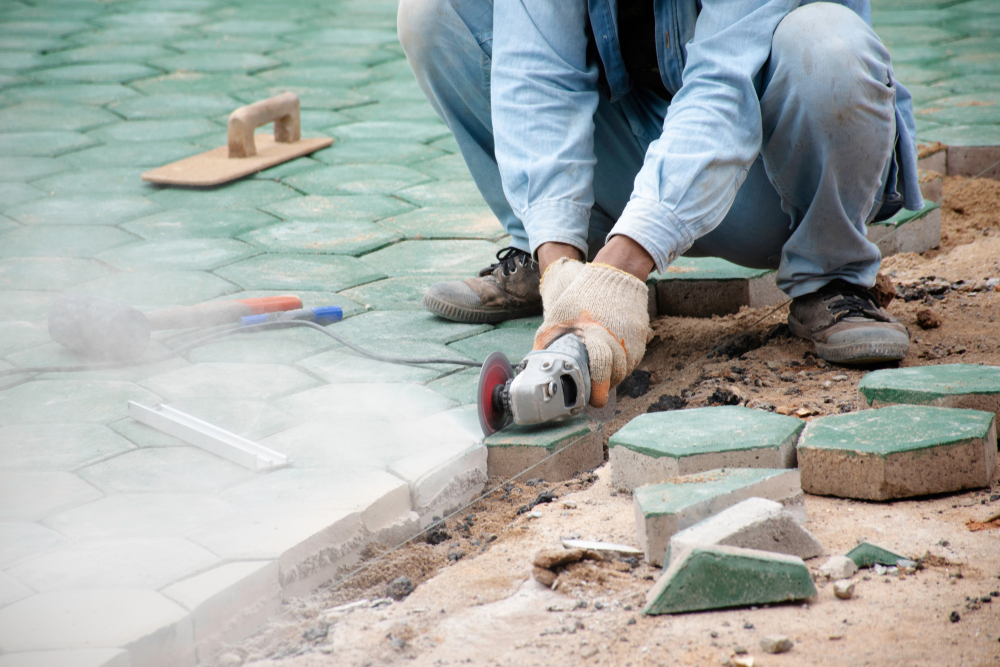Does your construction or repair project require cutting through asphalt or concrete? Do you want to know about the most effective and precise method of cutting asphalt or concrete?
When it comes to removing asphalt or concrete, the first thing most people think of is a jackhammer.
However, using a jackhammer in certain situations is not necessarily the best option as it can lead to cracks in the surface.
You can avoid these cracks with the help of a cutting saw that will provide clean cuts. Saw-cutting asphalt and concrete offers a number of benefits compared to other options.
Here’s a list of some of the major reasons experts recommend using saw-cutting for asphalt or concrete.
1. More Precise Cuts
Using a saw to cut through asphalt or concrete results in precise cuts as these powerful saws cut through the material precisely and do not waver.
Precise cuts ensure minimal wastage which saves a lot of money. The other methods of cutting through asphalt or concrete usually produce a lot of avoidable waste and that adds onto your budget.
Therefore, it is better to use a saw as it is designed to give precise cuts.
2. It is Faster
Saw cutting is a much more efficient way of cutting through concrete or asphalt as the tool doesn’t waver and the job is completed right the first time.
You get faster results and don’t have to deal with a lot of waste. Saving time means saving a lot of money and saw cutting is the best way to save time when it comes to cutting through asphalt or concrete.
3. Customisation
In many asphalt or concrete cutting projects, personalisation is the reason for cutting. By using a saw to cut through this material, you get a much more professional result which is great for customisation.
4. Better Finishing
Since you get a lot more control over the equipment when using a saw to cut through asphalt or concrete, it helps in getting a much better finish compared to other solutions.
Simply put, you get a much better finish with a saw.
Steps for Saw Cutting Asphalt or Concrete
There are some simple steps involved in making precise cuts through asphalt or concrete.
Here’s a list of the steps you need to follow whether you are removing a damaged asphalt/concrete section or fixing a pothole:
1. Clean the Area
The most important thing you need to do before you begin cutting is to clean the area to make sure there is no debris around. This will prevent the saw from catching on stones that would put you and others at risk. So, make sure there is no debris, pebbles or rocks lying around.
2. Cutting Lines
To make precise cuts, it’s important to mark the cut lines before you begin. Experts recommend using a chalk line to mark the cut lines. You should dent this line with the help of a hammer and chisel, or a screwdriver. It will give the saw a precise path to follow for making precise cuts.
3. Making the Cuts
Before you start cutting through the pavement, it is recommended to check the thickness of the pavement. You will need this thickness to set the blade depth.
Checking the thickness of the pavement is easy. Just dig out the edge of the pavement to find the thickness. After selecting the blade depth, make a straight cut to the precise thickness and lift the saw.
Always make straight cuts and do not try to turn the saw as it will break the blade. Once the desired section has been cut, remove the waste and carry on with your project.
Conclusion
Overall, using a saw to cut through asphalt or concrete offers more precise cuts, saves time, saves money and allows better finishing.
That’s why it’s important to use the services of a professional and experienced concrete cutting company to make sure the job is done right the first time.
If you are looking for a specialist concrete cutting company who uses only the best practices to get the job done right, then please call us at Megasaw on 1300 920 419 or contact us through our website.









